A single day Winter Tour in North Norfolk today. We were lucky with the weather. It was raining as we drove down to the coast, but dry by the time we met up and we could see the clouds were about to clear from the west. We had some nice bright, sunny spells during the morning, before it clouded over again during the afternoon. It was just starting to spit with rain again as we walked back to end the day. Perfect timing!
Our destination for the morning was Holkham. We parked on Lady Anne’s Drive and got out to scan the grazing marshes. There were lots of ducks – lots of Wigeon out on the grass, Teal around the pools and a few Mallard scattered around too.
We got the scopes on a couple of Greylag Geese and admired their outsize orange ‘carrot’ bills. One or two Pink-footed Geese flew over calling, but we managed to find one on the ground too – through the scope we could see the differences from the Greylags, the Pink-footed Goose being smaller, darker and with a more delicate bill, dark with pink markings. An Egyptian Goose flew over, flashing its white upperwing coverts.
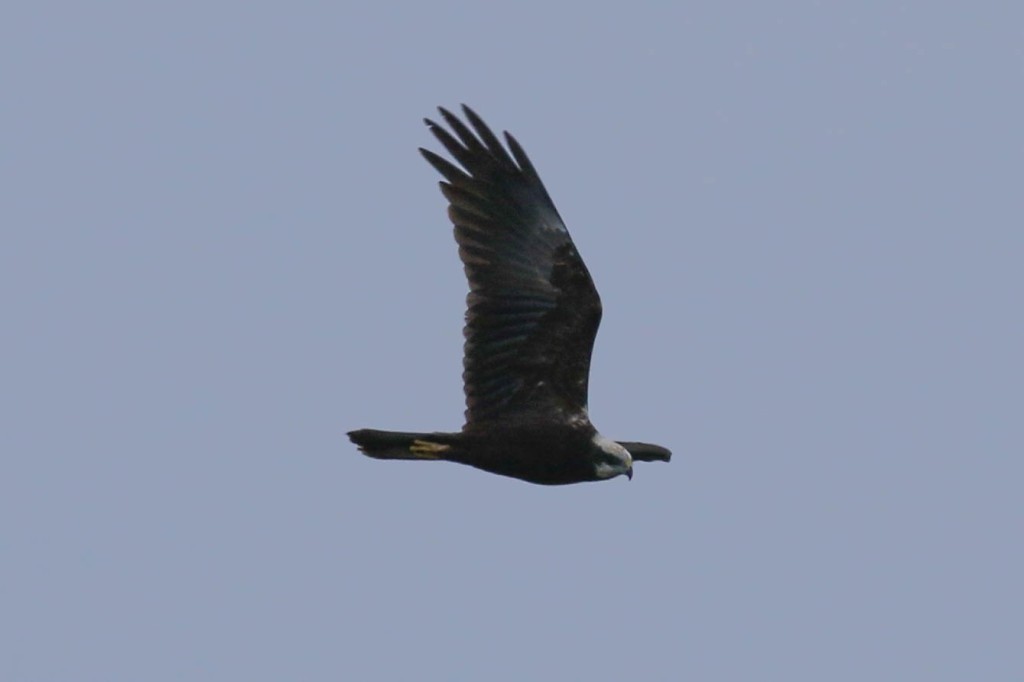
There were a couple of Marsh Harriers over the back, and we got the scopes on one perched on a post which had green wing tags. Unfortunately it was too far away to read the code on the tags. A Common Buzzard was perched on the top of a bush on the bank too. After a while, one of the Marsh Harriers drifted over the grazing marshes towards us, flushing all the ducks, and continued out over the other side of the Drive. A Great White Egret flew over too.
There were waders out here too. We got the scope on a close Curlew, admiring its long downcurved bill. A small flock of Ruff flew in over the grass and disappeared off behind us. We managed to spot two Common Snipe hiding in the grass just behind one the pools, and they remained there motionless while we watched them.
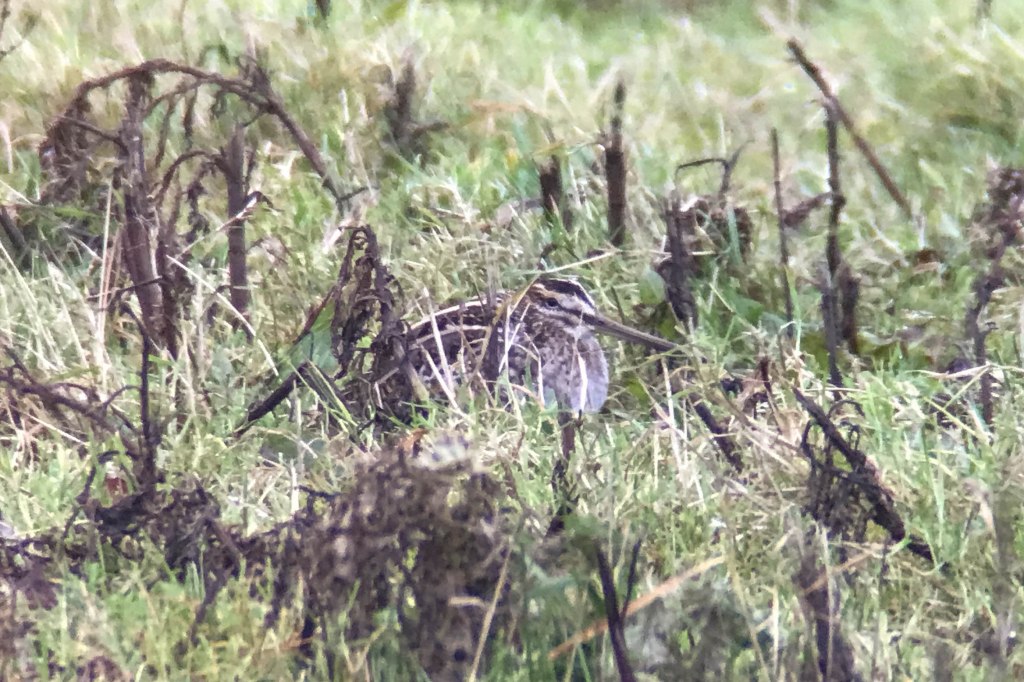
A flock of Black-tailed Godwits flew in, whirling round over the grazing marshes before dropping down on one of the pools among the Wigeon. There were lots of Lapwings out on the grass too. Two dropped down quite close to us and one proceeded to repeatedly chase after the other until it flew off – a bit of territoriality, even in the middle of winter.
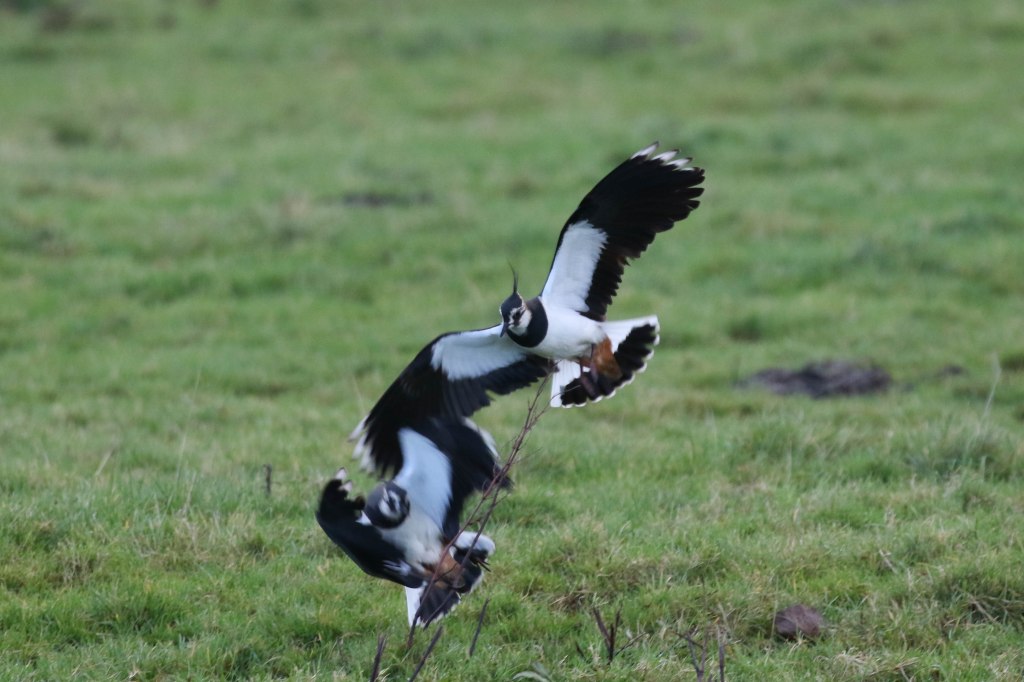
Stopping again just before the pines, we had another scan of the grazing meadows and finally managed to locate some Grey Partridge, a small covey of four feeding down below us in the grass and doing a well-camouflaged impression of the nearby dead thistles. Through the scopes we could see their orange faces and dark kidney-shaped belly patches.
Continuing on through the trees, we walked east on the edge of the saltmarsh up towards the cordon. A couple of birders walking back the other way told us that the Shorelarks were feeding out on the beach, so we took the path out through the dunes. We had only just got to the beach when we met two locals coming back who told us that the Shorelarks had flown back over the dunes. A quick scan of the beach revealed hundreds of gulls feeding on the tideline on all the shellfish washed up after the recent storms, along with Brent Geese, Oystercatchers, Turnstones and Sanderlings.
Our first priority was to find the Shorelarks this morning, so we cut back through the dunes and round on the north side of the cordon. A quick scan and we could see them down at the far end, so we continued round and got them in the scopes. There were five Shorelarks again today, creeping around in the low vegetation, we could see their bright yellow faces and black masks. Having had a good look, we continued on through the dunes again further along and back out to the beach, and set the scopes up to scan the sea out in Holkham Bay.
There were a few Great Crested Grebes on the sea and as we scanned across we picked up two Red-necked Grebes too, slightly smaller, darker with duller cheeks. One of the group picked up a Great Northern Diver and after watching that for a while, we found a second one further east and a bit further out.
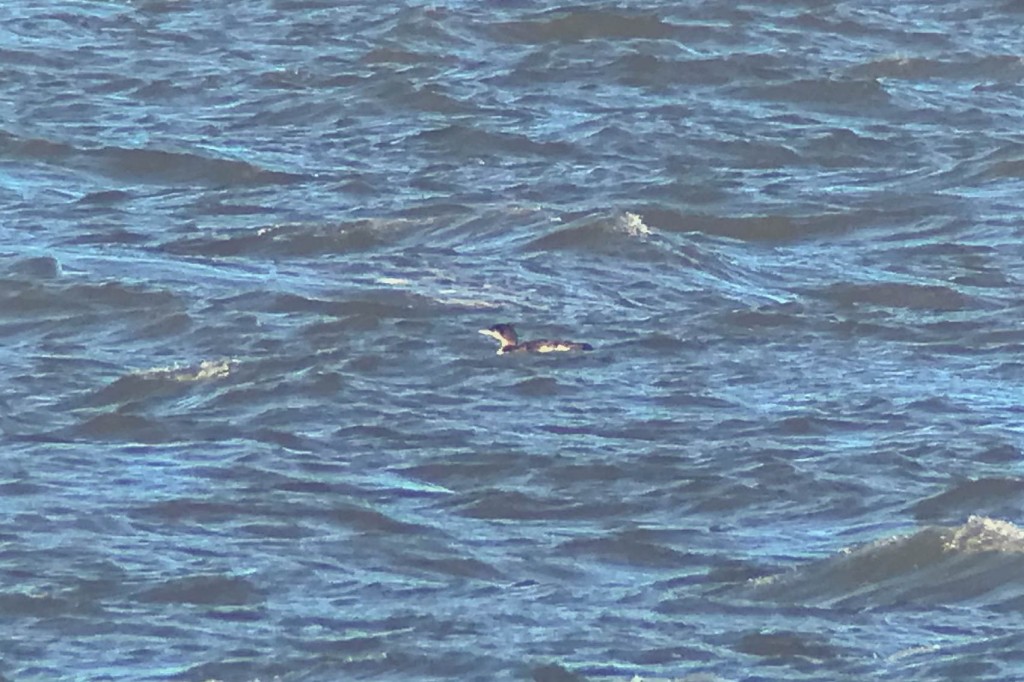
There was a good selection of ducks offshore. First we got the scopes on some Common Eider, a mixture of females and 1st winter males, and Red-breasted Mergansers with their punk haircuts, out beyond the breakers. There were several larger rafts of Common Scoter too, mostly females and immature birds with pale cheeks and dark caps.
A small group of six Velvet Scoter were a little further out and harder to see, but with the sun now out behind us the white spots on their faces caught the sun and we could occasionally see the white in their wings when they flapped. We should strictly say ‘Velvet-type’ Scoter, as there have been claims of a possible Stejneger’s Scoter here in recent days, one of the six, the Asian cousin of our Velvet Scoter and a very similar species. This bird is meant to look a little bigger, chunkier, more angular with a heavier bill. One did seem to be a little bigger today, and seemed to be keeping slightly separate from the others, but as it woke up and preened it looked more like a 1st winter male Velvet Scoter. The birds are just too far out to see enough detail though, it will take a boat trip out to see if there is indeed something different in amongst them.
On our way back, we stopped for another look at the Shorelarks. From the south side of the cordon, the sun was behind us now and the Shorelarks looked really smart, their yellow faces glowing in the low winter light. We were just admiring them through the scopes when for no apparent reason they suddenly took off, along with a single Skylark. The Skylark dropped down again over by the dunes, but after circling round the Shorelarks flew up and over the pines behind us, possibly heading in to find some freshwater.
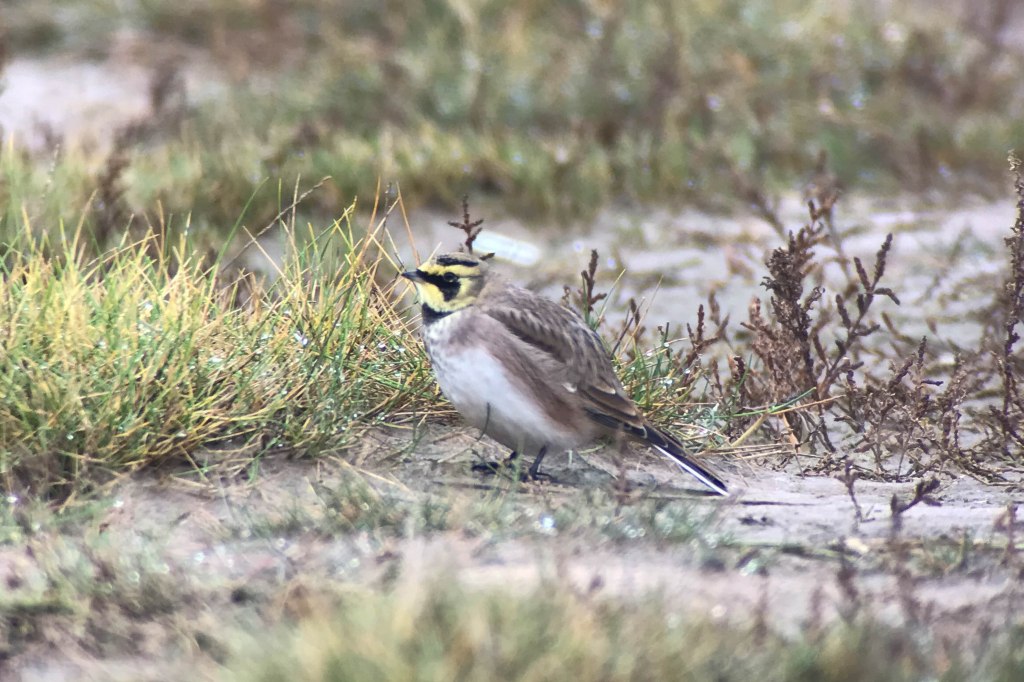
When we got back to The Lookout we stopped to use the facilities. Several of the group wanted a hot drink to warm up, so we decided to stop for an early lunch. A Peregrine flew past in the distance, over towards the road, and a Red Kite was hanging in the air over Quarles Marsh. We ate out on the picnic tables today and with one eye still on the grazing marshes spotted the Great White Egret was it dropped back in out on the grass.
After lunch, we drove east. Our destination for the afternoon was to be Cley, but on the way, as the sun was shining, we took a very short diversion just off the coast road towards Wiveton. A small group of birders were standing on the verge looking across the road at the hedge the other side. We found somewhere to park and walked back to join them.
A female Blackcap was flicking around in the ivy and a flock of Long-tailed Tits came through calling. Unfortunately it started to cloud over just as we arrived and the Barred Warbler that everyone was watching for became a little more elusive. We didn’t have to wait long before it appeared on the ivy though, up near the top. But after perching briefly out on the edge, the Barred Warbler flew over the road and disappeared into one of the gardens. We would settle for a brief view and continued round to Cley.
As we walked up the East Bank, we stopped to admire some of the ducks in the sunshine. A pair of Shoveler were feeding on one of the small pools on the grazing marsh, we could see their outsize shovel-like bills when they lifted their heads out of the water. A little further up, we got the scopes on some close Teal on the near edge of the Serpentine.
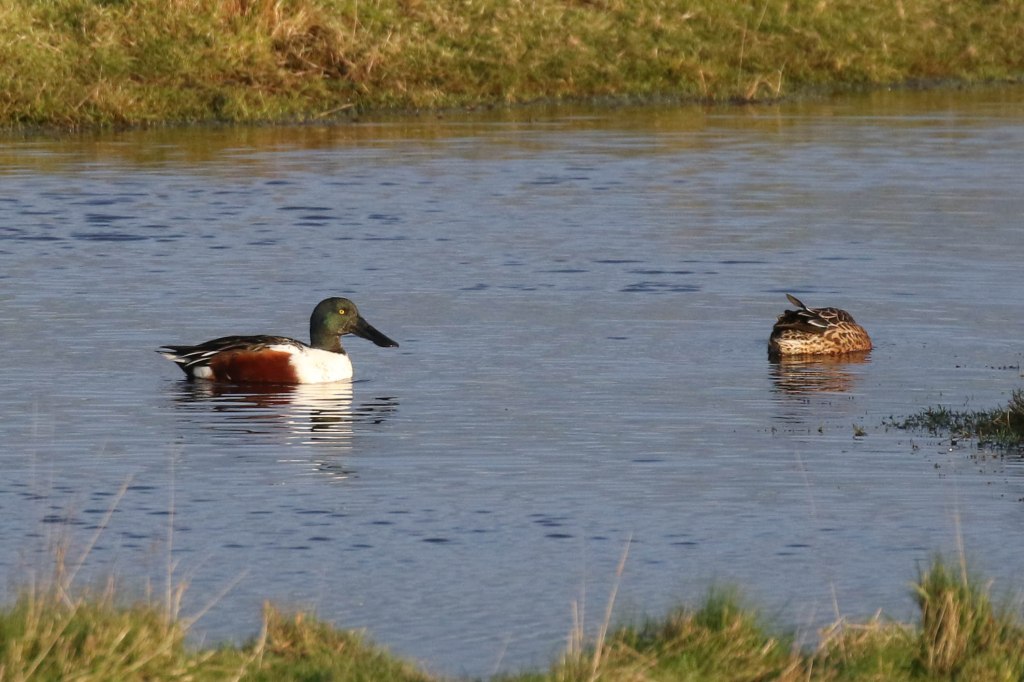
A small flock of Dunlin was feeding out on the edge of Pope’s Pool, where several Cormorants were drying their wings on the islands. A Kingfisher shot past low over the reeds behind us and disappeared down into one of the ditches out of view. A huge flock of Pink-footed Geese came up off the marshes in the distance to the east of us, over towards Salthouse. Arnold’s Marsh is still very full of water, but several Little Grebes on the brackish pool the other side of the path were an addition to the day’s list.
We had seen several people out on the shingle ridge to the east as we walked out, and two people walking back now confirmed that there were still two Snow Buntings out there, our main target for the afternoon. We could see darker clouds approaching from the west, so we decided to head straight out now. As we approached their favoured spot, we saw some movement on the shingle ahead of us. A single Snow Bunting, it hunkered down in a shallow depression in the stones and we got it in the scope.
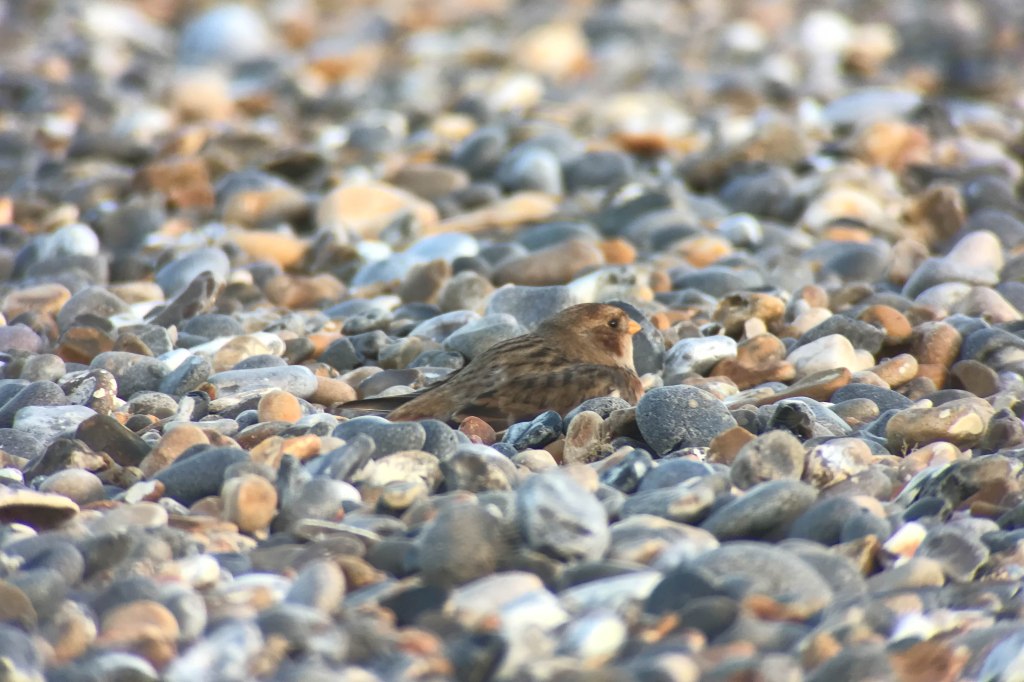
The Snow Bunting was very well camouflaged and very difficult to pick up unless you knew exactly where it was, but we had a great view through the scope. A fairly dark individual, it was probably a young bird of the Icelandic race. While we were watching it, a second paler bird picked its way over the shingle towards it, from further back.
We had a quick scan of the sea from here. We picked up a couple of Red-throated Divers on the water, and got one of them in the scope, although it was diving continually and hard to keep track of. There were a few Guillemots out here too, which were a bit easier to see. A small skein of Pink-footed Geese flew over behind us calling. The wind had licked up and it was getting chilly out here with the light starting to go. We decided to head back.
It was starting to spit with rain now, but it was nearly time to call it a day anyway. We had a quick drive round between Cley and Salthouse, to see if we could find the Brent Geese anywhere while we warmed up in the minibus, but there was no sign of them either in the Eye Field or on the winter wheat east of Walsey Hills, areas which they have been favouring.
As we drove back towards Wells, it started to rain. We had been very lucky with the weather today, and it had been a great day out.
















